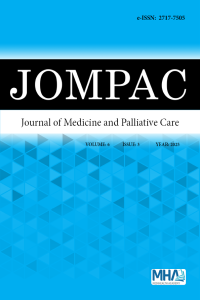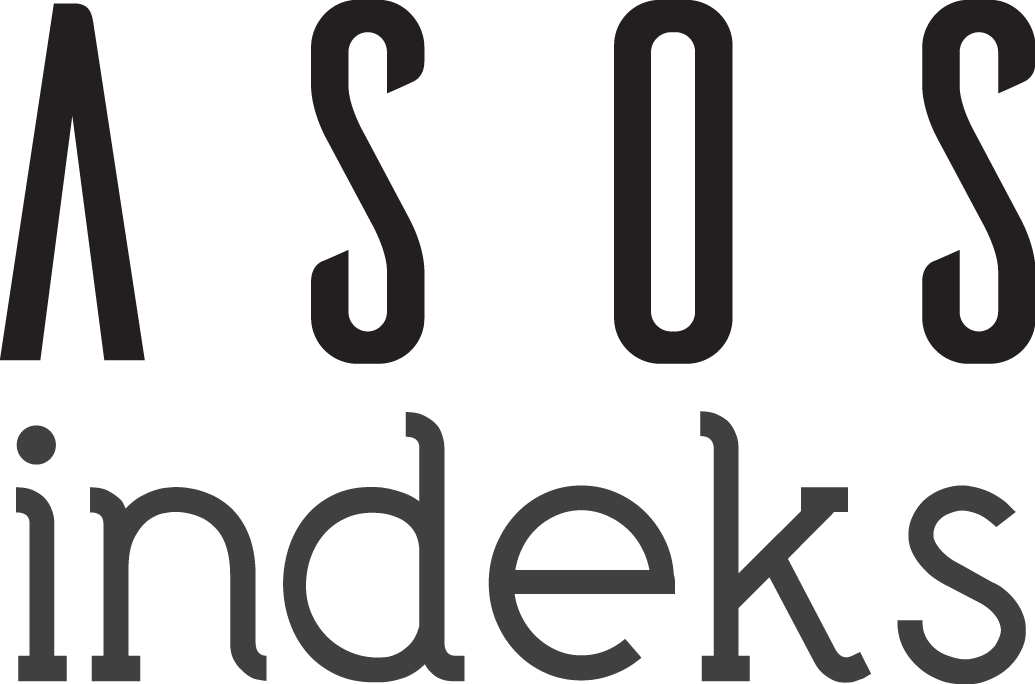Exploring the evolution of artificial intelligence in pathology: a bibliometric and network analysis
Abstract
Aims: Artificial intelligence (AI) has emerged as a transformative force in pathology, significantly influencing diagnostic accuracy, workflow efficiency, and digital pathology integration. Despite the rapid growth in AI-related pathology research, a comprehensive analysis of publication trends, key contributors, and scientific impact remains limited. This study aims to provide a bibliometric and network analysis of AI applications in pathology, mapping research trends, citation networks, institutional collaborations, and emerging thematic clusters.
Methods: A bibliometric analysis was conducted using data from the Web of Science Core Collection, covering studies published between 2007 and 2024. Research trends, citation distributions, keyword co-occurrences, and collaboration networks were analyzed using VOSviewer. Descriptive statistics and network visualization techniques were applied to assess publication growth, author collaborations, and journal impact.
Results: The findings are consistent with other studies showing a more than proportionate increase in AI-based research in pathology since 2018, especially AI related pathology research is on a significant rise focusing on laboratory investigation, modern pathology and journal of pathology as the primary high impact journals. Important research centers like the University of Pittsburgh, Radboud Universiteit, and the Cleveland Clinic have made significant advancements in AI based pathology which have and will continue to make a significant impact within this area. The key words used most frequently were “AI”, “digital pathology”, “deep learning”, and “machine learning” which corroborate the centrality of AI in pathology.
Conclusion: AI does have a major contribution towards transforming pathology by aiding in providing quick and efficient diagnosis. Nonetheless, issues around the standardization of data, the black box nature of algorithms, and the regulation of data raise serious challenges towards achieving successful clinical incorporation of AI. The focus of future work should center around standardization of validation protocols, inter-disciplinarity, and ethical issues in order to ensure the dependable implementation of AI enabled solutions in pathology.
Keywords
Artificial intelligence digital pathology deep learning machine learning bibliometric analysis
Ethical Statement
This study is a bibliometric analysis conducted solely using publication data obtained from open-access databases; therefore, it does not require ethical committee approval
References
- Försch S, Klauschen F, Hufnagl P, Roth W. Artificial intelligence in pathology. Dtsch Arztebl Int. 2021;118(12):199. doi:10.3238/arztebl.m2021.0011
- Chang HY, Jung CK, Woo JI, et al. Artificial intelligence in pathology. J Pathol Transl Med. 2019;53(1):1-12. doi:10.4132/jptm.2018.12.16
- Moxley-Wyles B, Colling R, Verrill C. Artificial intelligence in pathology: an overview. Diagn Histopathol. 2020;26(11):513-520. doi:10. 1016/j.mpdhp.2020.08.004
- Acs B, Rantalainen M, Hartman J. Artificial intelligence as the next step towards precision pathology. J Intern Med. 2020;288(1):62-81. doi:10. 1111/joim.13030
- Rakha EA, Toss M, Shiino S, et al. Current and future applications of artificial intelligence in pathology: a clinical perspective. J Clin Pathol. 2021;74(7):409-414. doi:10.1136/jclinpath-2020-206908
- Harrison Jr JH, Gilbertson JR, Hanna MG, et al. Introduction to artificial intelligence and machine learning for pathology. Arch Pathol Lab Med. 2021;145(10):1228-1254. doi:10.5858/arpa.2020-0541-CP
- Shen Z, Hu J, Wu H, et al. Global research trends and foci of artificial intelligence-based tumor pathology: a scientometric study. J Transl Med. 2022;20(1):409. doi:10.1186/s12967-022-03615-0
- Zhao J, Han Z, Ma Y, Liu H, Yang T. Research progress in digital pathology: a bibliometric and visual analysis based on Web of Science. Pathol Res Pract. 2022;240:154171. doi:10.1016/j.prp.2022.154171
- Xiong DD, He RQ, Huang ZG, et al. Global bibliometric mapping of the research trends in artificial intelligence-based digital pathology for lung cancer over the past two decades. Digit Health. 2024;10: 20552076241277735. doi:10.1177/20552076241277735
- Moran-Sanchez J, Santisteban-Espejo A, Martin-Piedra MA, Perez-Requena J, Garcia-Rojo M. Translational applications of artificial intelligence and machine learning for diagnostic pathology in lymphoid neoplasms: a comprehensive and evolutive analysis. Biomolecules. 2021; 11(6):793. doi:10.3390/biom11060793
- Zhang T, Chen J, Lu Y, Yang X, Ouyang Z. Identification of technology frontiers of artificial intelligence-assisted pathology based on patent citation network. PLoS One. 2022;17(8):e0273355. doi:10.1371/journal.pone.0273355
- Baxi V, Edwards R, Montalto M, Saha S. Digital pathology and artificial intelligence in translational medicine and clinical practice. Mod Pathol. 2022;35(1):23-32. doi:10.1038/s41379-021-00919-2
- Abels E, Pantanowitz L, Aeffner F, et al. Computational pathology definitions, best practices, and recommendations for regulatory guidance: a white paper from the Digital Pathology Association. J Pathol. 2019;249(3):286-294. doi:10.1002/path.5331
Abstract
Özet
Amaç: Yapay Zekâ (YZ), patolojide dönüştürücü bir güç olarak ortaya çıkmış ve tanı doğruluğu, iş akışı verimliliği ve dijital patoloji entegrasyonu üzerinde önemli etkiler yaratmıştır. YZ ile ilgili patoloji araştırmalarında hızlı bir artış olmasına rağmen, yayın eğilimleri, başlıca katkı sağlayanlar ve bilimsel etki üzerine kapsamlı analizler sınırlı kalmıştır. Bu çalışma, patolojide YZ uygulamalarına yönelik bibliyometrik ve ağ analizleri sunarak araştırma eğilimlerini, atıf ağlarını, kurumsal iş birliklerini ve ortaya çıkan tematik kümeleri haritalamayı amaçlamaktadır.
Yöntemler: Web of Science Core Collection veritabanından elde edilen ve 2007-2024 yılları arasında yayımlanmış çalışmaları kapsayan verilerle bibliyometrik analiz gerçekleştirilmiştir. Araştırma eğilimleri, atıf dağılımları, anahtar kelime eşgörünümleri ve iş birliği ağları VOSviewer yazılımı kullanılarak analiz edilmiştir. Yayın artışı, yazar iş birlikleri ve dergi etkisini değerlendirmek için tanımlayıcı istatistikler ve ağ görselleştirme teknikleri uygulanmıştır.
Bulgular: Bulgular, diğer çalışmalarla tutarlı olarak, 2018'den bu yana patolojide YZ temelli araştırmalarda orantısız şekilde artan bir büyümeyi ortaya koymaktadır. Özellikle Laboratory Investigation, Modern Pathology ve Journal of Pathology gibi yüksek etkili dergilerde yayımlanan YZ ile ilgili patoloji araştırmalarında dikkate değer bir artış gözlemlenmiştir. University of Pittsburgh, Radboud Üniversitesi ve Cleveland Clinic gibi önemli araştırma merkezleri, YZ tabanlı patoloji alanında önemli ilerlemeler kaydetmiş ve bu alanda kayda değer etkiler yaratmıştır. En sık kullanılan anahtar kelimeler “yapay zekâ”, “dijital patoloji”, “derin öğrenme” ve “makine öğrenmesi” olup, bu terimler patolojide YZ’nin merkezî rolünü doğrulamaktadır.
Sonuç: YZ, hızlı ve etkili tanı sağlamaya yardımcı olarak patolojiyi dönüştürmede önemli katkılar sunmaktadır. Ancak, veri standartlarının belirlenmesi, algoritmaların “kara kutu” doğası ve veri düzenlemeleri gibi konular, YZ’nin başarılı bir şekilde klinik uygulamaya entegre edilmesinde ciddi zorluklar oluşturmaktadır. Gelecek çalışmaların, doğrulama protokollerinin standardizasyonu, disiplinlerarası iş birlikleri ve etik konulara odaklanması, YZ destekli çözümlerin patolojide güvenilir bir şekilde uygulanabilmesi açısından kritik öneme sahiptir.
References
- Försch S, Klauschen F, Hufnagl P, Roth W. Artificial intelligence in pathology. Dtsch Arztebl Int. 2021;118(12):199. doi:10.3238/arztebl.m2021.0011
- Chang HY, Jung CK, Woo JI, et al. Artificial intelligence in pathology. J Pathol Transl Med. 2019;53(1):1-12. doi:10.4132/jptm.2018.12.16
- Moxley-Wyles B, Colling R, Verrill C. Artificial intelligence in pathology: an overview. Diagn Histopathol. 2020;26(11):513-520. doi:10. 1016/j.mpdhp.2020.08.004
- Acs B, Rantalainen M, Hartman J. Artificial intelligence as the next step towards precision pathology. J Intern Med. 2020;288(1):62-81. doi:10. 1111/joim.13030
- Rakha EA, Toss M, Shiino S, et al. Current and future applications of artificial intelligence in pathology: a clinical perspective. J Clin Pathol. 2021;74(7):409-414. doi:10.1136/jclinpath-2020-206908
- Harrison Jr JH, Gilbertson JR, Hanna MG, et al. Introduction to artificial intelligence and machine learning for pathology. Arch Pathol Lab Med. 2021;145(10):1228-1254. doi:10.5858/arpa.2020-0541-CP
- Shen Z, Hu J, Wu H, et al. Global research trends and foci of artificial intelligence-based tumor pathology: a scientometric study. J Transl Med. 2022;20(1):409. doi:10.1186/s12967-022-03615-0
- Zhao J, Han Z, Ma Y, Liu H, Yang T. Research progress in digital pathology: a bibliometric and visual analysis based on Web of Science. Pathol Res Pract. 2022;240:154171. doi:10.1016/j.prp.2022.154171
- Xiong DD, He RQ, Huang ZG, et al. Global bibliometric mapping of the research trends in artificial intelligence-based digital pathology for lung cancer over the past two decades. Digit Health. 2024;10: 20552076241277735. doi:10.1177/20552076241277735
- Moran-Sanchez J, Santisteban-Espejo A, Martin-Piedra MA, Perez-Requena J, Garcia-Rojo M. Translational applications of artificial intelligence and machine learning for diagnostic pathology in lymphoid neoplasms: a comprehensive and evolutive analysis. Biomolecules. 2021; 11(6):793. doi:10.3390/biom11060793
- Zhang T, Chen J, Lu Y, Yang X, Ouyang Z. Identification of technology frontiers of artificial intelligence-assisted pathology based on patent citation network. PLoS One. 2022;17(8):e0273355. doi:10.1371/journal.pone.0273355
- Baxi V, Edwards R, Montalto M, Saha S. Digital pathology and artificial intelligence in translational medicine and clinical practice. Mod Pathol. 2022;35(1):23-32. doi:10.1038/s41379-021-00919-2
- Abels E, Pantanowitz L, Aeffner F, et al. Computational pathology definitions, best practices, and recommendations for regulatory guidance: a white paper from the Digital Pathology Association. J Pathol. 2019;249(3):286-294. doi:10.1002/path.5331
Details
| Primary Language | English |
|---|---|
| Subjects | Pathology |
| Journal Section | Research Articles [en] Araştırma Makaleleri [tr] |
| Authors | |
| Publication Date | June 18, 2025 |
| Submission Date | March 31, 2025 |
| Acceptance Date | May 6, 2025 |
| Published in Issue | Year 2025 Volume: 6 Issue: 3 |
TR DİZİN ULAKBİM and International Indexes (1d)
Interuniversity Board (UAK) Equivalency: Article published in Ulakbim TR Index journal [10 POINTS], and Article published in other (excuding 1a, b, c) international indexed journal (1d) [5 POINTS]
|
| ||
|
|
|
Our journal is in TR-Dizin, DRJI (Directory of Research Journals Indexing, General Impact Factor, Google Scholar, Researchgate, CrossRef (DOI), ROAD, ASOS Index, Turk Medline Index, Eurasian Scientific Journal Index (ESJI), and Turkiye Citation Index.
EBSCO, DOAJ, OAJI and ProQuest Index are in process of evaluation.
Journal articles are evaluated as "Double-Blind Peer Review".













